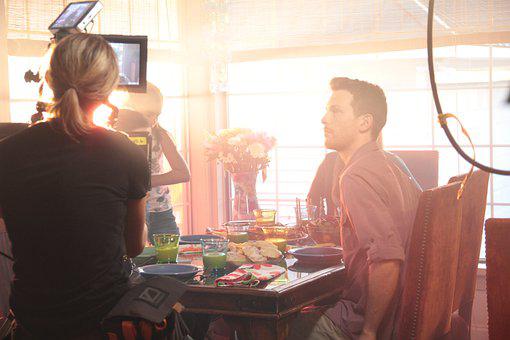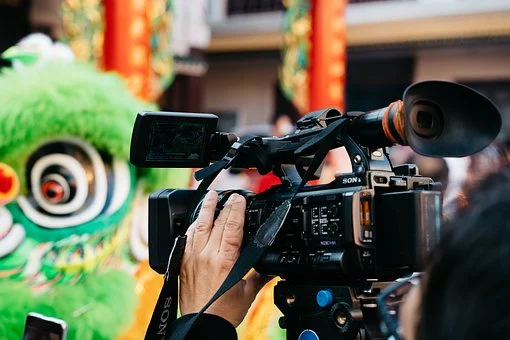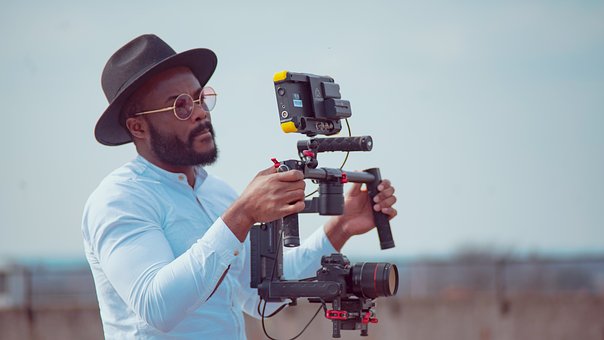It’s not enough to just record the action when you want to tell a tale through film. It is also important to consider how the pictures were taken. The art of capturing moving images on film or on television is called cinematography. Cinematography is the art of taking photographs and presenting a story through their presentation in a moving picture or on television. Cinematography is the practice of creating all of the visual aspects that appear on screen. These elements include lighting, framing, composition, camera motion and camera angles, film choice, lens options, depth of field, zoom, focus, color, exposure, and filtering.
What is a Cinematographer?
The term “cinematographer” was initially developed to refer to the individual who either shoots or directs films, but it has now been expanded to encompass people who labor behind the scenes to create camera equipment and lighting for films. The responsibility of the cinematographer begins with the choosing of the camera, during which the cinematographer will either employ hand-held cameras to obtain more intimate images or larger Steadicam setups to record more wide scenes.
In addition to this, they have creative control over the lighting, color saturation, and the framing of shots within the frame. Directors of photography are referred to as cinematographers, and it is their job to capture images on film or video.
Cinematography has a long and illustrious history that can be traced back to the 1800s. On the other hand, due to the widespread availability of digital cameras and software for editing, cinematography is now something that can be done by virtually anyone.
What Exactly is it that a Cinematographer Does?
The person in charge of the camera and the lighting team is called the cinematographer, who is also referred to as the Director of Photography. They are the one in charge of giving each and every shot in a movie its appearance, color, lighting, and framing, and they are the ones who are responsible for such things. Because the primary responsibility of a cinematographer is to make decisions that are in line with the director’s overarching vision for the movie, the director and cinematographer of the film collaborate very closely with one another. In productions with a lower budget, the cinematographer could also take on the role of the camera operator. Members of the American Society of Cinematographers are granted the right to place “ASC” after their name in film credits and are eligible for honors given for outstanding cinematography. The American Society of Cinematographers also hands out awards for the greatest cinematography.
Eric Branco, known for his work on the films “Clemency” and “Emerald City,” thinks that it is the responsibility of the cinematographer to visually convey the vision of the filmmaker”I think that the movie’s director is ultimately in charge of the script, and I think that the cinematographer’s job is to turn the director’s ideas into something real and substantial that can be photographed.” According to Michael E. Satrazemis, who stars in “The Walking Dead,” one of the responsibilities of a director of photography (DP) is to “work with the artists and assist them if they require information on when the big moment or the effect will occur. Then, you interact with numerous other departments, including the production designer and costume department, on the texturing. It is something that necessitates collaboration”.
Cinematographers currently working in the industry have shared their processes with us. Now, let’s quickly go over some of the most important things to think about when working as a cinematographer.
Elements of Cinematography to Consider with Regards to Camera Position
It is important where the camera is placed by the cinematographer. For instance, it may shed light on their character conduct or the state of their emotions. The proximity of the subject to the camera can either captivate or disengage the viewer, depending on how it’s used.
Camera Movement
The movement of the camera can ratchet up the intensity of the feelings and the tension of a situation. In addition, panning the camera alongside the characters might help to create a more subjective viewpoint. On the other hand, maintaining a stationary camera will lead to the creation of a more objective point of view.
Composition of the Shot
The rules of shot composition specify how the components of a scene should be organized within the frame in order to effectively communicate the director’s vision.
Your actors, for instance, are a visual element that needs to be placed in a certain way. In this installment of our masterclass series on filmmaking techniques, we cover blocking and staging in the video that can be found below.
Shot Size
What percentage of the scene is actually visible to the viewer? Are we at a close-up of a subject’s face and looking at it? Should we use an extremely close-up shot that focuses on a subject’s clothing to draw the attention of the audience? The cinematographer’s job description includes a number of important responsibilities, including shot size and camera framing.
The use of an extremely wide picture can put the subject of the photograph in a precarious situation. The use of a medium shot might provide the impression that the audience is participating in the discourse. It is critical for a cinematographer to have the ability to determine the ideal shot size for the action taking place on screen at any given instant. You may get started by learning photography for beginners.
Ratio of Aspects
A cinematographer is someone who is familiar with the term “aspect ratio.” This refers to the frame’s width and height dimensions, respectively. While higher frames are better for highlighting performance, wider frames are better for capturing landscapes and action. Certain frame dimensions, such as the 2:1 aspect ratio, combine both of these aspects.
Visuals become the language for a cinematographer, and aspect ratio plays a significant role in that process.
Focus
To play with the focus of the camera in order to place emphasis on various areas of the narrative is one of the responsibilities of a cinematographer. When a character is inebriated, for instance, you could see a point-of-view shot of them that is going in and out of focus. The way in which the camera is used to tell the tale is ultimately what matters the most, and the options presented here are just few of the many possibilities.
Lens Choice
Images captured by a camera with one of its many distinct lenses can look very different from one another. A crucial part of the job of a photographic directory is making sure that the appropriate lens is used at the appropriate time.
Cinematographer Duties in Films
The following describe the three primary responsibilities of a cinematographer in the production of a motion picture:
Pre-Production
A conversation with the director to better understand their goals and objectives serves as the first step in the process. After that, a cinematographer will decide what is required for each scene, employ the camera crew, make purchases, and make arrangements for the necessary equipment.
Production
On a film set, directors of photography collaborate closely with members of other departments to produce the desired visual effect. These departments include the lighting department, camera operators, and directors. Cinematographers also apply many strategies to create distinct aesthetics for situations, such as lighting elements, shot sizes and widths, and camera angles.
Post-Production
After the shooting is finished, it is the responsibility of the director of photography to work with the processing lab to ensure that the color is preserved and that the visuals accurately portray the filmmaker’s creative vision.





